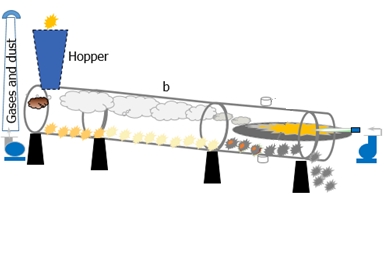Color control in industrial clay calcination
DOI:
https://doi.org/10.21809/rilemtechlett.2020.107Keywords:
cement, calcined clays, color, calcination, performanceAbstract
The combined use of calcined clays and limestone in the ternary system LC3 enables up to 50% of clinker substitution without affecting the performance. Low grade calcined clays are rich in iron. If calcined in an oxygen rich atmosphere, they turn to red. Cement producers avoid selling cement with a color different to the traditional. This paper proposes a method to modify color during calcination by controlling the atmosphere during the cooling. At calcination, the high temperature favors the formation of magnetite even at oxidizing conditions. However, during the cooling phase, magnetite can convert back to hematite if oxygen is available and the calcined material will have a reddish color. The procedure to control color consists of injecting liquid fuel at the carcass of the kiln while the calcined material exits, so that it combusts and exhausts the oxygen available during the cooling process. The procedure was successfully implemented at a pilot kiln in India. Controlling the calcination atmosphere enabled the production of a black calcined clay, instead of a red material. The reactivity and properties of both red and black clay are very similar, and no side effects have impacted properties of LC3 cements produced with the treated clay.

Downloads
Published
How to Cite
Issue
Section
License
Authors retain copyright of the articles published in RILEM Technical Letters and grant the journal the right of first publication with open access. The work is simultaneously licensed under Creative Commons Attribution 4.0 International License (CC BY 4.0) that allows others to share and adapt the work under the following terms: 1) a proper attribution is given in a form of a reference to the original work's authorship and initial publication in RILEM Technical Letters (bibliographic record with the DOI link); 2) a link to the license is provided; 3) the changes (if any) are indicated.









